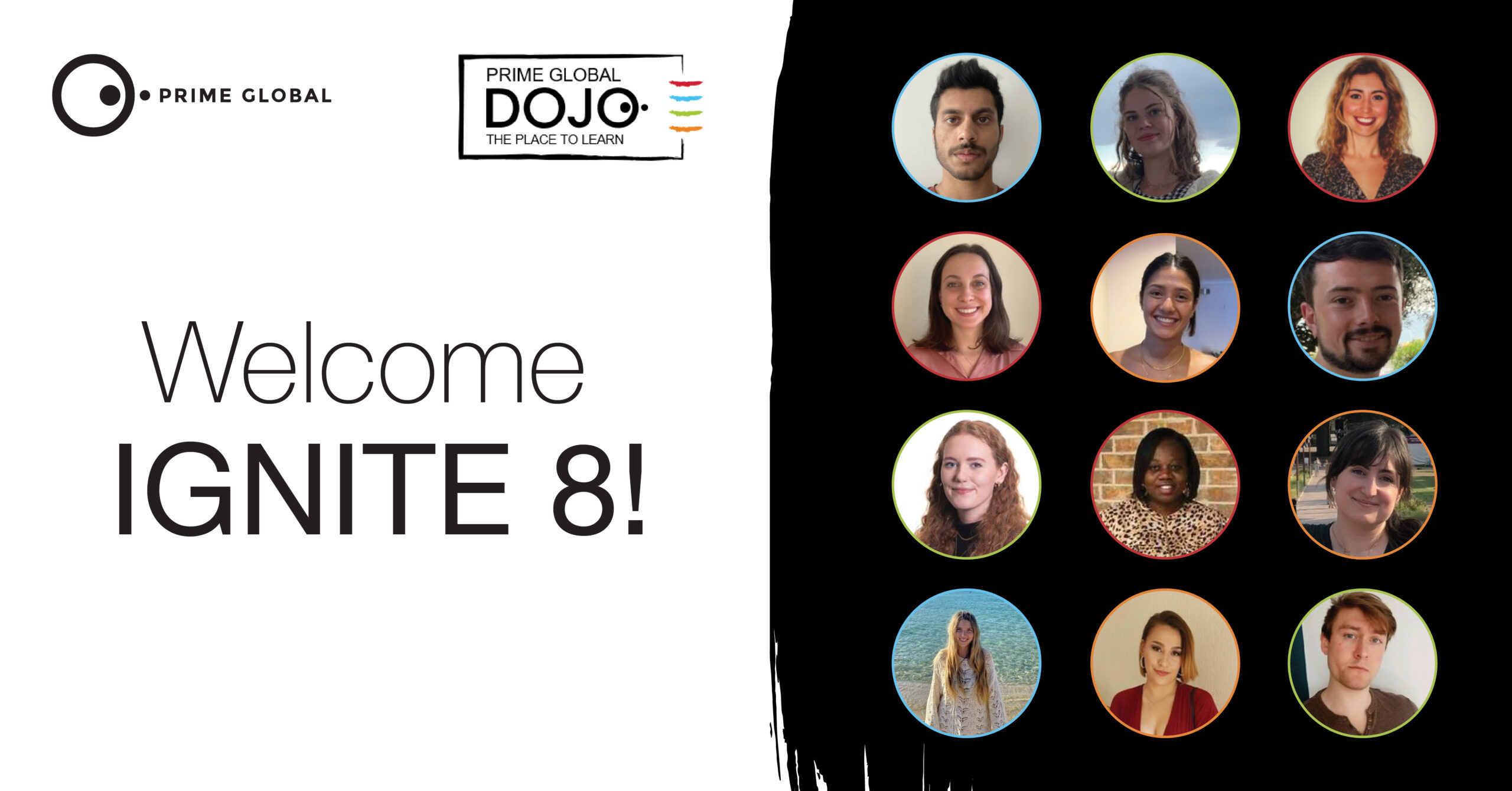Haemophilia is a lifelong genetic disorder characterised by excessive bleeding.(1) Despite the existence of treatments for haemophilia, the condition continues to have major impacts on quality of life, for example in the areas of pain (acute and chronic), joint mobility, and physical function.(1) To mark World Haemophilia Day on 17 April, Prime Patient partnered with sister agency HCD Economics, a consultancy specialising in haemophilia patient research, and haemophilia advocate Laurence Woollard to better understand the existing relationship between patients and industry and how meaningful improvements can be made to the lives of people living with haemophilia (PwH).
The current landscape
The history of the haemophilia landscape could be likened to a rollercoaster, with some significantly tough times being followed by real improvements in the quality of treatments for PwH. Recently diagnosed patients are seeing greatly improved clinical outcomes compared to previous generations; advances in gene therapy, for example, mean today’s younger patients face a vastly different landscape to the one experienced by older PwH.
However, as with many conditions, challenges still exist, and it is fascinating to hear Laurence’s views on these, given his experiences of both living with haemophilia and advocating for the needs of this community. Especially considering the theme of this year’s World Haemophilia Day (WHD) – Partnership, Policy, Progress – WHD is a perfect opportunity to look at where the haemophilia ‘rollercoaster’ currently sits, what progress has been made, and how partnerships between industry and the patient community can continue to improve outcomes.
A key source of evidence here is ‘The Cost of Haemophilia in Europe: a Socioeconomic Survey II’ (the CHESS II study), which was co-developed by HCD Economics and various patient groups to gather patient-centric data and community perspectives on the lived experience of PwH.(3) Looking at real-world clinical and patient-centric outcomes in people living with haemophilia, CHESS II not only provides an essential snapshot of the current haemophilia landscape, but also, in itself, reflects the strength of partnerships available in the space. The key findings of this study’s predecessor – ‘CHESS I’ – have been used in many publications and policy decisions, (4) and data from both CHESS I and CHESS II continue to shine a light on quality of life issues, burden of illness, and socio-economic societal burden of haemophilia, amongst many other factors.
As one patient in the CHESS II study summarised: “As a 30-year-old patient with severe haemophilia A, I have seen haemophilia care transformed within my lifetime. However, as this analysis highlights, advances in therapeutics have not translated into the expected quality of life improvements for all people with haemophilia.” This underlines how important it is to understand the current haemophilia landscape, so that further continuous joint efforts with PwH, research experts, physicians, and industry can keep improving patient outcomes and lived experience.(5)
We asked Laurence what sorts of challenges were still faced by PwH, and where the haemophilia community might see the most progress through working in partnership with Pharma.
Removing barriers to optimal care

Laurence Woollard, haemophilia advocate and director of On the Pulse Consultancy
If PwH receive effective education, they are better able to leverage their knowledge to self-advocate for the care they need. Laurence is a prominent voice in the haemophilia community and knows a lot about his condition and treatment, but naturally, not everyone living with haemophilia is in his position. Laurence explains: “despite availability of highly efficacious medicines where developed healthcare systems exist, too many of my peers are unaware of what ‘optimal care’ is and looks like, including not having access to all members of a highly skilled multidisciplinary care team to meet their individual needs. This is further complicated by specialist centres having diverging views and philosophies of good patient outcomes.”
This is an interesting unmet need for some PwH, presenting an opportunity for pharmaceutical companies to support both the standardisation of positive outcome definitions and the education of patients as to what care they need to effectively manage their condition. Indeed, the majority of PwH responding to a 2021 study reported seeking additional information beyond what they had previously been provided with (even if they already considered themselves well-informed), highlighting the importance of patient education.(6) Furthermore, it is widely acknowledged that, if patients are supported to take an active role in their care, they are more likely to experience better outcomes than if they are merely passive recipients of treatment.(7,8) Evidently, patient education has both immediate and long-term benefits.
A further barrier to optimal care exists with access. A recent report by The All-Party Parliamentary Group (APPG) on Haemophilia and Contaminated Blood revealed that, “individual prescribing decisions are being driven by the prices set in the tender rather than patient and clinician preference”, a direction that is even resulting in PwH being forcibly cut off from treatments to which they are responding well.(9) Here, pharmaceutical companies may play a role in identifying where treatments are being swapped out due to cost barriers and proactively work with payers to align on new pricing parameters. This will enable pharmaceutical companies to help prevent any drop in the standard of care provided to PwH.
The importance of shared decision making
 Although shared decision making has been embraced in policy in recent years and patients have been informationally empowered through the rise of the Internet, Laurence reminds us that, “Forty years on, the contaminated blood scandal [through which many PwH were infected with HIV and hepatitis C through receipt of infected blood products] is a stark reminder of the paternalistic past and a precautionary principle with regards to decision making where treatment uncertainties persist”. This is understandably still a tender topic within some haemophilia circles, due to not only the direct physical and mental distress and damage caused to those PwH involved but also the resulting loss of the community’s trust in the healthcare system.
Although shared decision making has been embraced in policy in recent years and patients have been informationally empowered through the rise of the Internet, Laurence reminds us that, “Forty years on, the contaminated blood scandal [through which many PwH were infected with HIV and hepatitis C through receipt of infected blood products] is a stark reminder of the paternalistic past and a precautionary principle with regards to decision making where treatment uncertainties persist”. This is understandably still a tender topic within some haemophilia circles, due to not only the direct physical and mental distress and damage caused to those PwH involved but also the resulting loss of the community’s trust in the healthcare system.
As one report from the ongoing Infected Blood Inquiry states, the common perception that ‘what a patient did not know, would not harm them’ was shown to be incorrect. Simply put, the oversimplified notions that “doctor knows best”, that a patient’s view was not worth respecting or considering, have been shown to be not only unethical but also dangerously catastrophic to patient outcomes. This in an area in which healthcare has changed significantly in the years since the scandal, with much greater emphasis today on transparency and collaboration between healthcare professionals and patients.
 To maintain this momentum, Laurence believes it is important to continue raising the voices of PwH – particularly around awareness dates such as World Haemophilia Day – and to keep finding ways to educate and empower patients, for example via industry-community collaborations. This is necessary so that, as Laurence explains, risk-benefit discussions can be held in a more collaborative and meaningful manner (both in the trial setting and with doctors and nurses), leading to the empowerment of patients to provide informed consent for treatment.
To maintain this momentum, Laurence believes it is important to continue raising the voices of PwH – particularly around awareness dates such as World Haemophilia Day – and to keep finding ways to educate and empower patients, for example via industry-community collaborations. This is necessary so that, as Laurence explains, risk-benefit discussions can be held in a more collaborative and meaningful manner (both in the trial setting and with doctors and nurses), leading to the empowerment of patients to provide informed consent for treatment.
As well as empowering people to better understand medical/health information, Laurence adds that patients and research participants must also be effectively informed on their rights and why they matter, including the right to a dialogue with healthcare professionals and researchers.
Embedding patient centricity into future haemophilia medicine
As well as supporting education, it is imperative that pharmaceutical companies continue committing to long-term patient engagement programmes to improve care and nurture trust and mutual respect with the haemophilia community. It is only through meaningful partnership efforts that industry can hope to effect a truly egalitarian future of haemophilia care that fully meets these patients’ needs.
One method of embedding patient centricity into pharmaceutical practices is to ensure clinical trials assess products on criteria which truly matter to patients. Interestingly, data from 2018 suggest bleeding and bleeding rates may not be considered important outcomes by PwH.(1) A quote from Mark Skinner, who is diagnosed with haemophilia and advocates for people living with bleeding disorders, reads “Understandably, haemophilia research has traditionally focused on bleed rates, but these alone just don’t tell the whole story…we need to start seeing how living with haemophilia affects the whole person, beyond bleeds…we need other ways to collect data that measure the emotional effects and quality of life impact of haemophilia and of new treatment approaches, to complement the clinical picture.”(10) Studies such as CHESS I and CHESS II have aimed to address this issue by focusing on patients’ lived experiences through assessing, for example, health-related quality of life.
 To assess aspects of haemophilia and its treatments that transcend typical clinical objectives, trials can be designed to collect data on patient-reported outcomes (PROs), which can include factors such as missed days of school/work or number of emergency room visits.(1) The Patient-Reported Outcomes, Burdens, and Experiences (PROBE) project was devised to address just that via the implementation of a data collection framework for PROs, specifically focusing on haemophilia.(11) The initiative, led by Skinner and supported by numerous industry partners, is a splendid example of amplification of the patient voice and reflection of the priorities of people living with haemophilia, as it not only focuses on PROs, but has been developed with direct patient involvement in PRO design, conduct, analysis, and reporting.
To assess aspects of haemophilia and its treatments that transcend typical clinical objectives, trials can be designed to collect data on patient-reported outcomes (PROs), which can include factors such as missed days of school/work or number of emergency room visits.(1) The Patient-Reported Outcomes, Burdens, and Experiences (PROBE) project was devised to address just that via the implementation of a data collection framework for PROs, specifically focusing on haemophilia.(11) The initiative, led by Skinner and supported by numerous industry partners, is a splendid example of amplification of the patient voice and reflection of the priorities of people living with haemophilia, as it not only focuses on PROs, but has been developed with direct patient involvement in PRO design, conduct, analysis, and reporting.
PROs are far from the only way to conduct patient-centric research. A 2021 publication co-authored by Jamie O’Hara, who lives with haemophilia and is the CEO of HCD Economics, described how patient preference-led research (in this case, a “discrete choice experiment” (DCE)) can be conducted in the field of haemophilia gene therapy.(12) By understanding which variables (e.g., treatment modality or preferred outcome(s)) are important to PwH when deciding on treatment options, not only can pharmaceutical and biotechnology companies better tailor their products to their end-users, but clinical and health policy decisions can also improve health equity for PwH more effectively.(12)
Looking to the future of haemophilia research and drug development, the ideal scenario would be for PROs, DCEs, and other means of incorporating the patient voice (such as patient-reported experience measures and collaborative setting of research priorities) to be embedded into all studies as standard practice. With initiatives like this, industry can provide treatments that make the best possible improvements to patient lives.
Conclusion
From education to collaboration and amplification, there are clear opportunities for industry to move forward with PwH into a new era of patient centricity. Nothing can change what happened in decades past, but in this era of medicine where informed consent and transparency are increasingly valued, PwH like Laurence are driven and empowered to let organisations know what they need. By continuing to build on the successful collaborations formed to date, industry and PwH can move forward together towards enhanced outcomes for all.
For more information, get in touch with the Prime Patient team via PatientEngagement@primeglobalpeople.com or with the HCD Economics team on info@hcdeconomics.com.
References
- Skinner M, Chai-Adisaksopha C, Curtis R, Frick N, Nichol M, Noone D, O’Mahony B, Page D, Stonebraker J, & Iorio A. The Patient Reported Outcomes, Burdens, and Experiences (PROBE) Project: development and evaluation of a questionnaire assessing patient reported outcomes in people with haemophilia. Pilot and feasibility studies. 4, 58. 2018
- Schnohr C, Bacher T, Andersen T, Lehrmann L, Funding E, Poulsen L, H, Holm K, B, Bjorner J, B: Joint Mobility and Physical Function of Danish Hemophilia Patients: A Three-Wave Panel Study Spanning 24 Years. Acta Haematol 2018;140:240-246.
- Rodriguez-Santana I, DasMahapatra P, Burke T, Hakimi Z, Bartelt-Hofer J, Nazir J et al. Differential humanistic and economic burden of mild, moderate, and severe haemophilia in European adults: a regression analysis of the CHESS II study. Orphanet Journal of Rare Diseases. 2022;17(1).
- O’Hara J, Hughes D, Camp C, Burke T, Carroll L, & Diego, D. The cost of severe haemophilia in Europe: the CHESS study. Orphanet Journal of Rare Diseases. 2017
- Saikh A, Burke T, Hawes C, Becker T, Brandt S, O’Hara J, Camp C. Real-world clinical and patient-centric outcomes in people with haemophilia A in Germany: Findings from the CHESS II study. Presented at the International Society on Thrombosis and Haemostasis (ISTH) Annual Meeting: 17th-21st July 2021, Virtual Congress.
- Banchev A, Batorova A, Faganel Kotnik B, Kiss C, Puras G, Zapotocka E, Zupancic-Salek S. A Cross-National Survey of People Living with Hemophilia: Impact on Daily Living and Patient Education in Central Europe. Patient Prefer Adherence. 2021;15:871-883
- Hibbard J, Greene J. What The Evidence Shows About Patient Activation: Better Health Outcomes and Care Experiences; Fewer Data on Costs. Health Affairs. 2013;32(2):207-214.
- Greene J, Hibbard J. Why Does Patient Activation Matter? An Examination of the Relationships Between Patient Activation and Health-Related Outcomes. Journal of General Internal Medicine. 2011;27(5):520-526
- The Haemophilia Society. Putting people with bleeding disorders at the heart of care [Internet]. APPG on Haemophilia and Contaminated Blood: Inquiry into Access to Treatment. Available from: https://haemophilia.org.uk/wp-content/uploads/2020/11/APPG_report_web.pdf
- Measuring what matters | Patient-Reported Outcomes measure the patient perspective and can help redefine haemophilia care. [Internet]. Roche.com. 2019. Available from: https://www.roche.com/stories/patient-reported-outcomes-in-haemophilia
- Home | PROBE [Internet]. Probestudy.org. Available from: https://probestudy.org/
- Witkop M, Morgan G, O’Hara J, et al. Patient preferences, and priorities for haemophilia gene therapy in the US: a discrete choice experiment. Haemophilia. 2021; 27: 769– 782.




